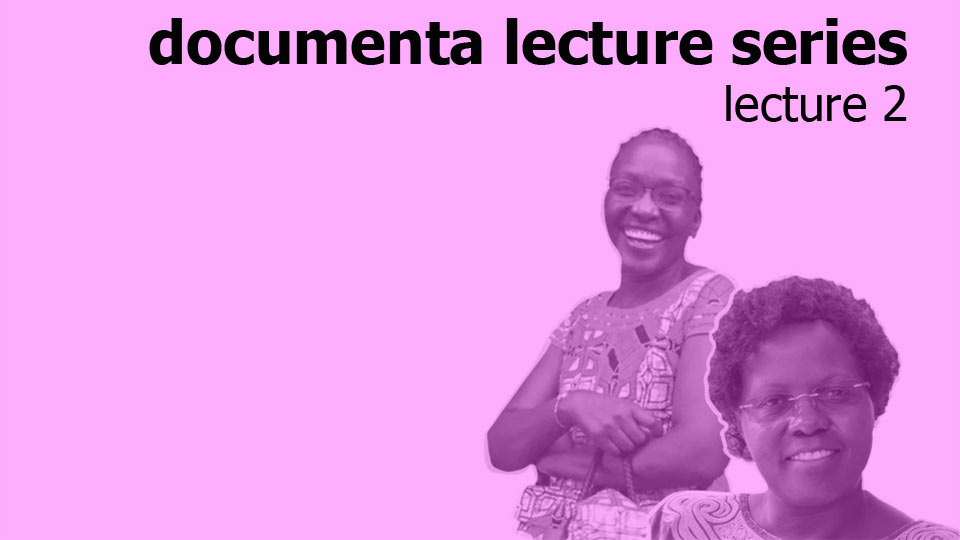Lecture series on Arts – Cultures – Policies – Educational Practices: Lecture 2
EVC – together with partners (University of Hildesheim; documenta fifteen) – is curating an online lecture series that explores concepts at the interface of culture, art, education and cultural policy. In this lecture series, international experts present their approaches in the context of the upcoming documenta fifteen. The series was developed and prepared in a joint seminar with students from the University of Hildesheim and the Academy of Fine Arts Munich. The lectures will be moderated by the students. The lectures take place online twice a month, starting on 30 September. (More information about the series) We are happy to invite you to the frist lecture by Emily Akuno and Mary Clare Kidenda (Nairobi/Kenya).
Emily Akuno speaks about "Music Education in Kenya – Persistent Thoughts"; Mary Clare Kidenda's topic is "The Role of Competency-Based Education and Training to Enhance the Quality of Design Practice and Planning in Jua Kali artisan’s Skills as a Community of Learners in Kenya". Abstracts see below.
October 14, 2021, 12:00 Central European Time
Moderators: Ana Manhey Ahrens, Franziska Batozynska
See the video: Link
Context: Camp on Education Link
Lecture: Music Education in Kenya – Persistent Thoughts by Emily Achieng’ Akuno
The story of music education is coloured by political and economic activities and their impact on cultural perceptions, considerations and practices. This interrogation of Kenyan music education considers:
- Concepts of and approaches to music education: This historical perspective focuses on the notion of music education and how that has played out over time, more so in the past century or so. It considers what happened in the name of music education, where and how, with which players, from colonial times to the current period.
- Policy and theory: It is said that if you fail to plan, you plan to fail. Policy matters are elements of planning, while theory implies conceptual and philosophical underpinnings for music. The presence and articulation of these will be considered, and their implications for contemporary music education practices assessed.
- Culture at the heart of music education:In concluding the presentation, the purpose of music education is interrogated from a perspective of value. The fact that music is an element of culture, and that culture drives human existence, points to considerations of culture in matters education, and especially music education. This will be discussed with a view to articulating music as an object worth engaging in towards meaning and money making, i.e. aesthetics (art for art’s sake) and utility (commerce and other uses).
Ultimately, the presentation seeks to tackle What we do, how we do it, and why in the name of music education.
Lecture: The Role of Competency-Based Education and Training to Enhance the Quality of Design Practice and Planning in Jua Kali artisan's Skills as a Community of Learners in Kenya by Mary Clare Kidenda
Education and training of all Kenyans is critical in realizing the Kenya Vision 2030 because it provides quality education and training that is globally competitive. Therefore, the Citizens must be equipped with knowledge and skills that will enable them to become relevant to the changing social and economic demands. The attainment of the Big 4 Agenda objectives in manufacturing requires skills upgrading amongst the sector’s players, especially the Jua Kali artisans. Most of these artisans are graduates of the 8-4-4 education system, which focuses on developing human resources for the formal sector, leaving thousands of graduates ill-equipped for the largely informal labour market. It does not provide flexible education pathways for identifying and nurturing aptitude, talents and learner interests early enough for preparation for the world of work, career progression and sustainable development. These systemic weaknesses in the training of design practice and planning coupled with their graduation from a narrowly-focused traditional apprenticeship system have translated into skills mismatch and insufficient skills in the manufacturing industry. This lesson looks at how the Competency-Based Education and Training approach provides a remedial training solution for the Jua kali community of learners by developing a Design Training Framework.
Key words: Jua Kali artisans; Competency-Based Education and Training; Design Practice and Planning; Community of Learners

